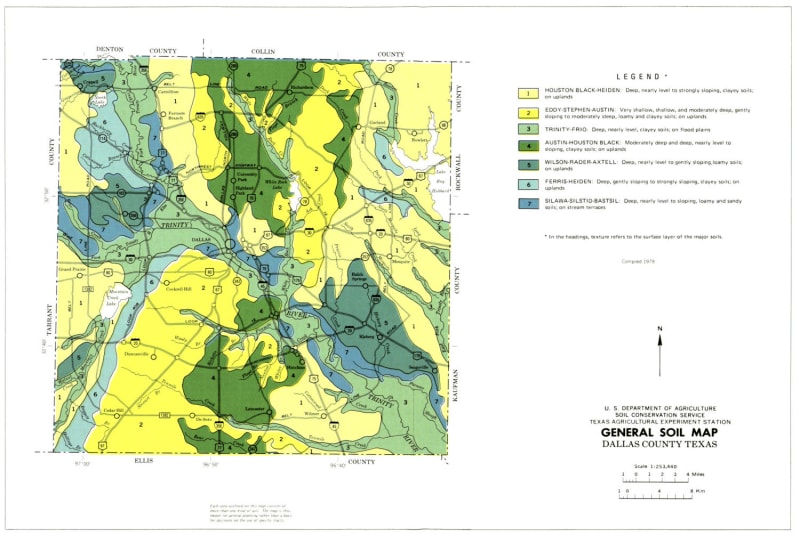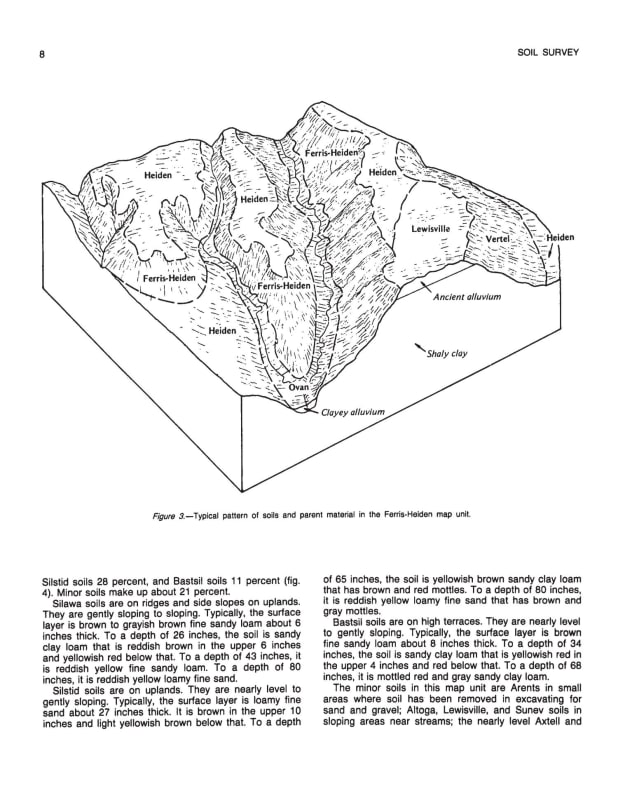I have 2 sites I'm working on at the moment (Dallas) that are FLAT. One is around 0.1% and the other is 0.15%. The only solutions I've been able to come up with is putting in a series of canals to catch the water and convey it at a virtually ~0% slope and to use the cuts from the canals to raise the pads. Keep in mind, this isn't residential, it's RV pads, so we have a lot more freedom to design it how we want. Does anyone have any other unique ideas on how they approach flat sites? Thanks
Navigation
Install the app
How to install the app on iOS
Follow along with the video below to see how to install our site as a web app on your home screen.
Note: This feature may not be available in some browsers.
More options
Style variation
-
Congratulations MintJulep on being selected by the Eng-Tips community for having the most helpful posts in the forums last week. Way to Go!
You are using an out of date browser. It may not display this or other websites correctly.
You should upgrade or use an alternative browser.
You should upgrade or use an alternative browser.
Grading a flat site?
- Thread starter AHickman
- Start date
- Status
- Not open for further replies.
LittleInch
Petroleum
How big a flat site?
What's the issue here? Surface water drainage?
Where's any water you collect going to go?
Remember - More details = better answers
Also: If you get a response it's polite to respond to it.
What's the issue here? Surface water drainage?
Where's any water you collect going to go?
Remember - More details = better answers
Also: If you get a response it's polite to respond to it.
- Thread starter
- #3
Surface water drainage, or lack thereof. If we left the site like it is, we'd have standing water and flooding everywhere. It's an 11.26 acre site that drains north-west to south-east at a 0.15% slope, currently used as farmland. We will likely need to provide detention on the corner of the site as well.
Infiltration.
--Einstein gave the same test to students every year. When asked why he would do something like that, "Because the answers had changed."
--Einstein gave the same test to students every year. When asked why he would do something like that, "Because the answers had changed."
LittleInch
Petroleum
Whats the ground conditions here?
Do you have boreholes? If not why not?
Is the water table ridiculously high?
Unless this is a paddy field, the field drainage shouldn't be that bad if its agricultural land?
My experience is that knowing what's metres down is always a good idea to get through any clay or other impermeable layers then run some sub surface drainage into a few soakaways.
Or deep rip the ground if it's all too compacted.
What does the field next door do?
Remember - More details = better answers
Also: If you get a response it's polite to respond to it.
Do you have boreholes? If not why not?
Is the water table ridiculously high?
Unless this is a paddy field, the field drainage shouldn't be that bad if its agricultural land?
My experience is that knowing what's metres down is always a good idea to get through any clay or other impermeable layers then run some sub surface drainage into a few soakaways.
Or deep rip the ground if it's all too compacted.
What does the field next door do?
Remember - More details = better answers
Also: If you get a response it's polite to respond to it.
We generally have flat sites here and a combination of infiltration and swales (at the canal end of the spectrum) seem to work best. and use the material to saw-tooth the roads and lots to create high and low points to fall to the swales
Are you required to treat the stormwater. or just get it to an attenuation device or just to the stream?
Are you required to treat the stormwater. or just get it to an attenuation device or just to the stream?
- Thread starter
- #9
The site is all clay, going down several feet deep, so infiltration (I don't believe) will be an option. Granted, I'm not sure how far down it is, so that is definitely something I will look into. We do not need to treat the stormwater, but we will most likely be required to detain is, as we will be increasing offsite flows.
LittleInch
Petroleum
Great place to put a RV park then....
You might need a hole several metres deep then, but a borehole will tell you pretty fast.
When I did something similar, I had to go down about 4 metres to hit a gravel layer. The guys digging the hole said when they started the hole filled up quite a bit with water, then they went through the last bit of clay and the water just vanished...
Remember - More details = better answers
Also: If you get a response it's polite to respond to it.
You might need a hole several metres deep then, but a borehole will tell you pretty fast.
When I did something similar, I had to go down about 4 metres to hit a gravel layer. The guys digging the hole said when they started the hole filled up quite a bit with water, then they went through the last bit of clay and the water just vanished...
Remember - More details = better answers
Also: If you get a response it's polite to respond to it.
- Thread starter
- #11
I'd love to be able to even think about designing something like that, but we're a very small Eng Firm (mainly just me and my father), and this isn't something he's ever had experience doing before. I wouldn't even know where to start to be honest, but I'll try googling around and see if I can find something. I haven't had much luck yet, but maybe I'll get lucky and stumble across a set of plans. Nonetheless, seems SUPER useful though and I wish it was something we were more familiar with or had ever seen in the past.
LittleInch
Petroleum
Start with a geotechnical borehole and ground water monitoring to understand what you're dealing with and where any free draining layer is present.
Far easier and cheaper to get gravity and nature to take your excess water away than digging ditches, levees, holding ponds, pumps etc
Remember - More details = better answers
Also: If you get a response it's polite to respond to it.
Far easier and cheaper to get gravity and nature to take your excess water away than digging ditches, levees, holding ponds, pumps etc
Remember - More details = better answers
Also: If you get a response it's polite to respond to it.
"Does anyone have any other unique ideas on how they approach flat sites?"
We took you too literally. You didn't mention that it should only include things you already have experience with. But frankly, basically underground gravity drainage on large flat sites always makes a need for deep excavations somewhere, or worse, lift stations. Personally I'd blade and grade to drain and be done with it. In Dallas, maybe the sun will come out and evaporate half of it before it reaches the corner. Underground, no chance. I lived in Arlington and there are (were that was 50yrs ago) a few small gravel deposits north of there in the Trinity, but really there isn't much gravel in Dallas, or all of Tx really. Almost every soil class leads to a high % of clay.

--Einstein gave the same test to students every year. When asked why he would do something like that, "Because the answers had changed."
We took you too literally. You didn't mention that it should only include things you already have experience with. But frankly, basically underground gravity drainage on large flat sites always makes a need for deep excavations somewhere, or worse, lift stations. Personally I'd blade and grade to drain and be done with it. In Dallas, maybe the sun will come out and evaporate half of it before it reaches the corner. Underground, no chance. I lived in Arlington and there are (were that was 50yrs ago) a few small gravel deposits north of there in the Trinity, but really there isn't much gravel in Dallas, or all of Tx really. Almost every soil class leads to a high % of clay.

--Einstein gave the same test to students every year. When asked why he would do something like that, "Because the answers had changed."
LittleInch
Petroleum
When they say "deep", what do they mean?
6 ft or 600ft?
Remember - More details = better answers
Also: If you get a response it's polite to respond to it.
6 ft or 600ft?
Remember - More details = better answers
Also: If you get a response it's polite to respond to it.
Attached is the Dallas Co. Soil Data file.
From
--Einstein gave the same test to students every year. When asked why he would do something like that, "Because the answers had changed."
From
--Einstein gave the same test to students every year. When asked why he would do something like that, "Because the answers had changed."
MadisonCameron
Bioengineer
You may consider using waterproofing materials on the surface of the areas to prevent water accumulation. It is also worth paying attention to the possibility of using drainage systems to effectively remove water from areas. Another option is to create slight elevations or slopes in areas to allow water to drain naturally. It is also important to consider drainage and direction of water flow to avoid stagnation and accumulation.
LittleInch
Petroleum
Trying out chatgpt?
Remember - More details = better answers
Also: If you get a response it's polite to respond to it.
Remember - More details = better answers
Also: If you get a response it's polite to respond to it.
Once you cut below the lowest point of your boundary, you’re infiltrating. I don’t see how you do this without infiltrating bc you have to limit your runoff. What about using permeable pavers (grass or bricks) as much as you can to keep your runoff coefficient as low as possible? Create a drainage area around your boundary low spot to sheet flow what you can offsite. Crown the center to shorten your swale lengths. Rain catchment for any structures. I see the infiltration rate driving this design.
ClemsonVet
Civil/Environmental
if there is no existing lowpoint or discharge point you'll likely need to bring in fill and pad your site, then create a linear basin for runoff attenuation and allow it to level spread to the property line(s)
- Status
- Not open for further replies.
Similar threads
- Locked
- Question
- Replies
- 2
- Views
- 612
- Locked
- Question
- Replies
- 4
- Views
- 2K
- Locked
- Question
- Replies
- 0
- Views
- 851
- Locked
- Question
- Replies
- 0
- Views
- 1K
- Replies
- 1
- Views
- 343

